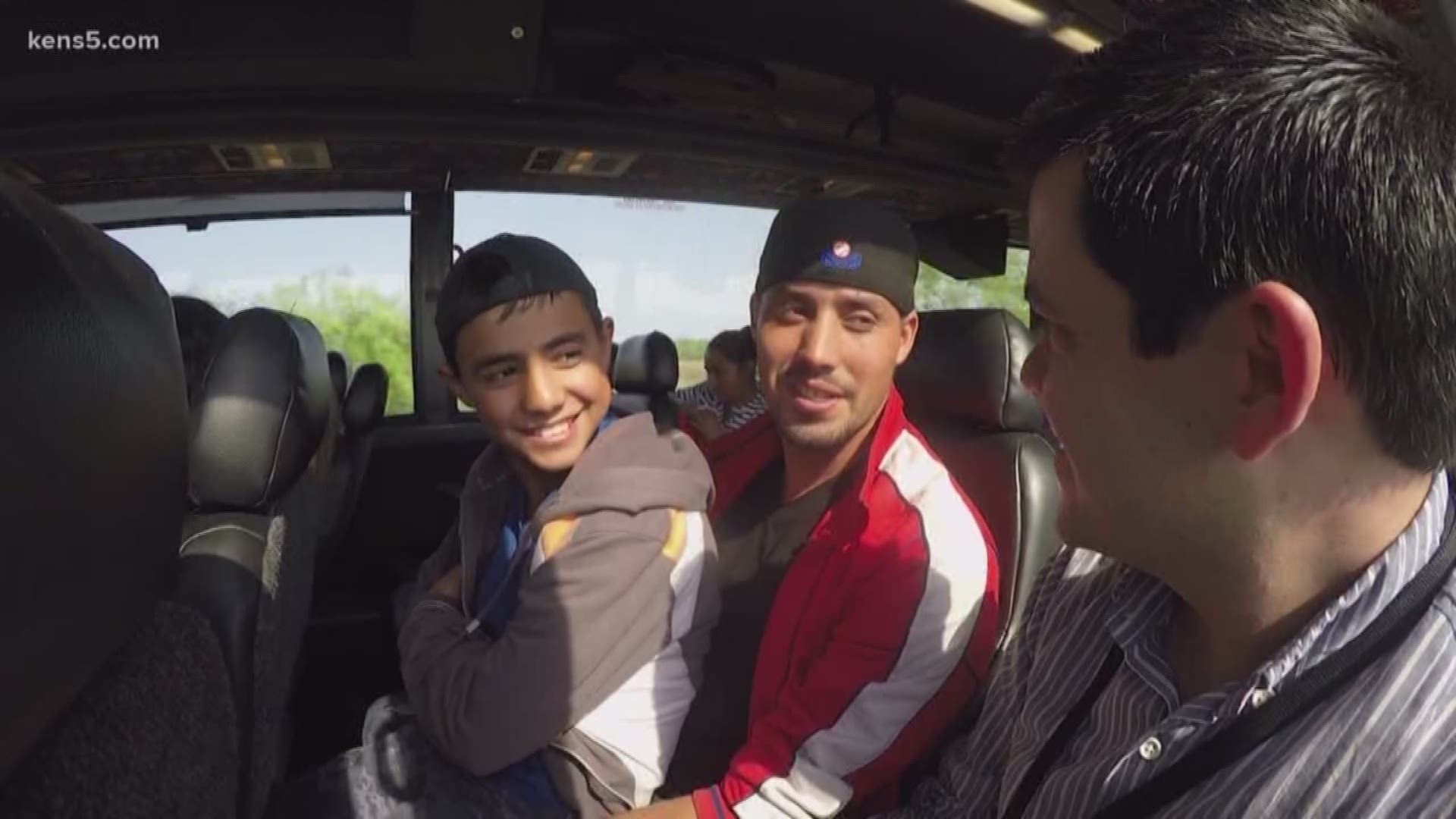President Donald Trump has signed executive orders twice to end “catch and release.” However, federal agencies continue to release undocumented immigrants, expecting them to show up at immigration court.
For one family, their journey is about far more than their court appearance, though.
While most people see undocumented families for the first time at bus stations along the border, the journey begins long before that. The bus station is just where most undocumented immigrants meet their families in the U.S. after their release from federal custody.
It’s up to the immigrants to decide if they will follow the rules that they’re given or if they’ll live in the shadows and fall through the cracks of the immigration system.
On a typical weekday morning in the border town of McAllen, Texas, several immigrants get off the Homeland Security bus and make a line to receive a new set of instructions to purchase bus tickets to their final destination.
Eli Fernandez is a Catholic Charities employee whose repeated instructions to groups of immigrants hundreds of times for the past four years. On this day, he’s talking to about 41 Central Americans, including children, who were just dropped off.
It’s a typical scene despite President Trump’s efforts to end “catch and release.”
Those whose relatives have already purchased their tickets in advance are called to the counter to book their seat. Yellow envelopes read all the stops and transfers that need to be made at places like Dallas, Memphis, San Antonio, Fresno, and Houston.
For those with no tickets or with layovers, they follow Fernandez for a few blocks, where he leads them to the Catholic Respite Center. It’s here that undocumented immigrants who’ve traveled for weeks finally get a chance to shower, eat, and make phone calls to their loved ones in the U.S.
Alfonso Guerrero, 40, volunteers full-time at the center. He’s also an immigrant who’s currently unemployed.
“We’ve gone through it, and we don’t want to see people struggling, you know?” Guerrero said.
Melvin Toledo and his son, Melvin Jr., are among the immigrants taking advantage of the center before they continue their journey to see their family in Houston. Toledo agreed to let us travel with him on the last part of his journey, on his way to meet his brother in Houston.
He’s looking forward to the moment that so many undocumented families yearn for.
Melvin and his son made a month-long trek to the U.S.-Mexico border. From their hometown of Comayagua, Honduras, they used any medium of transportation they could find to smuggle through Guatemala, Belize, and Mexico, where he said that they were robbed at gunpoint.
The 33-year-old father knew it would be risky but it’s a decision he needed to make for his own safety and for his son’s. The violence in his country drove him out, while poverty there is what he says brought him to the U.S.
Melvin and his son have been given a shot by asking the government for asylum. Their temporary protected status allows them to cross the last Border Patrol checkpoint and move north.
Melvin says that he spent about $3,000 to get to the U.S., including the $200 he paid a smuggler to get him across the Rio Grande River. He swears that he’ll abide by U.S. law while he’s in the country.
He wants a better life for his son, and hopes that one day he can help the rest of his family. He left behind his wife and two younger children. The family is betting on Melvin Jr. to get educated in the U.S. and find a way to permanently stay in the country.
Melvin Jr. dreams of becoming a mechanic, fixing cars and motorcycles. Their hope is to stay at least five years so that Melvin can turn 18 in the U.S.
With the current backlog of over 300,000 cases in immigration courts, it could be a few months to a few years before a judge makes a final ruling. If Melvin’s case gets stuck for more than 150 days, he’s allowed to apply for a work permit.
An ICE official said that the release of immigrant families is determined on a case-by-case basis. The official further explained that ICE has been severely limited in the way it can process and detain minors and, as a result, they can only detain family units in designated facilities.
In other words, the government says that the system is saturated and will continue down this path if laws remain unchanged.
President Trump has signed executive orders to end “catch and release” but language in the orders only calls on agencies to review practices and consider options to avoid releasing more immigrant adults and children.
For Melvin, he was released with an ankle monitor and isn’t allowed to travel outside of Houston’s city limits.
Nearly seven hours after arriving in the U.S., after the sun had set and rural fields were replaced by urban lights on the bus ride, Melvin and his son arrived in Houston.
Happiness took over Melvin Jr. as soon as he saw his uncle. As for his father, he was feeling relieved more than anything else. Now, he’s got to figure out his next move. But at least he’ll be with family.
God willing, he says, they’ll stay in the U.S. Melvin vowed to fight for his family’s dreams to come true. So far, it’s paying off.
Since that bus ride to Houston, Melvin had his first court hearing. He said it went well and that case workers were scheduled to pay him a visit at the home he’s staying at. On that day, about 120 undocumented immigrants were released and dropped off at the bus station back in McAllen.

